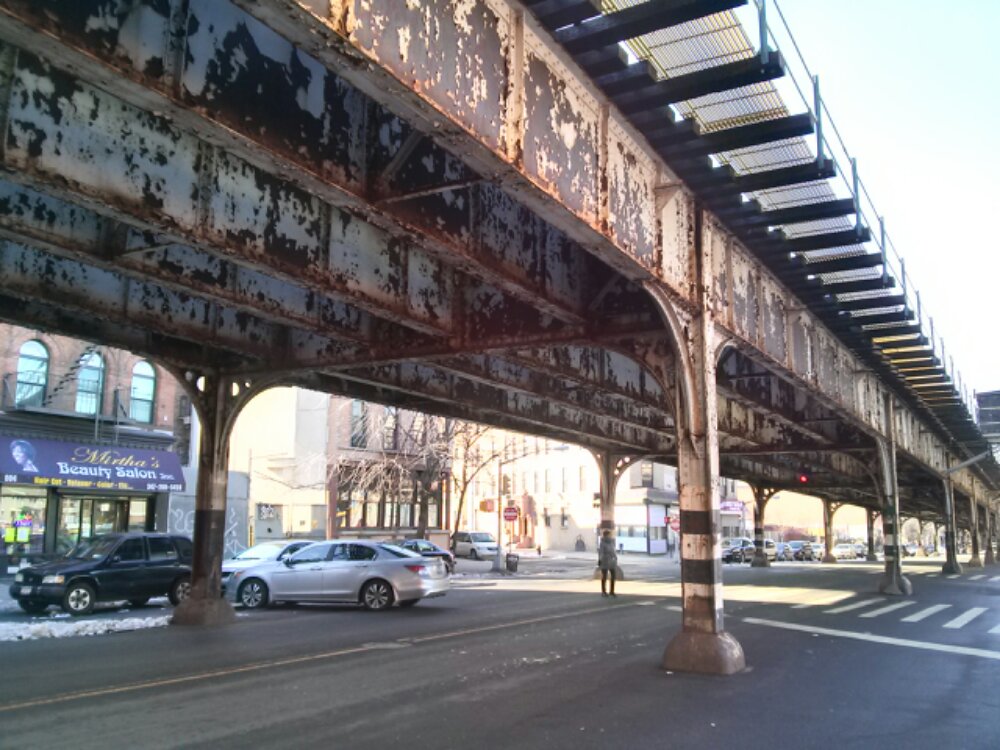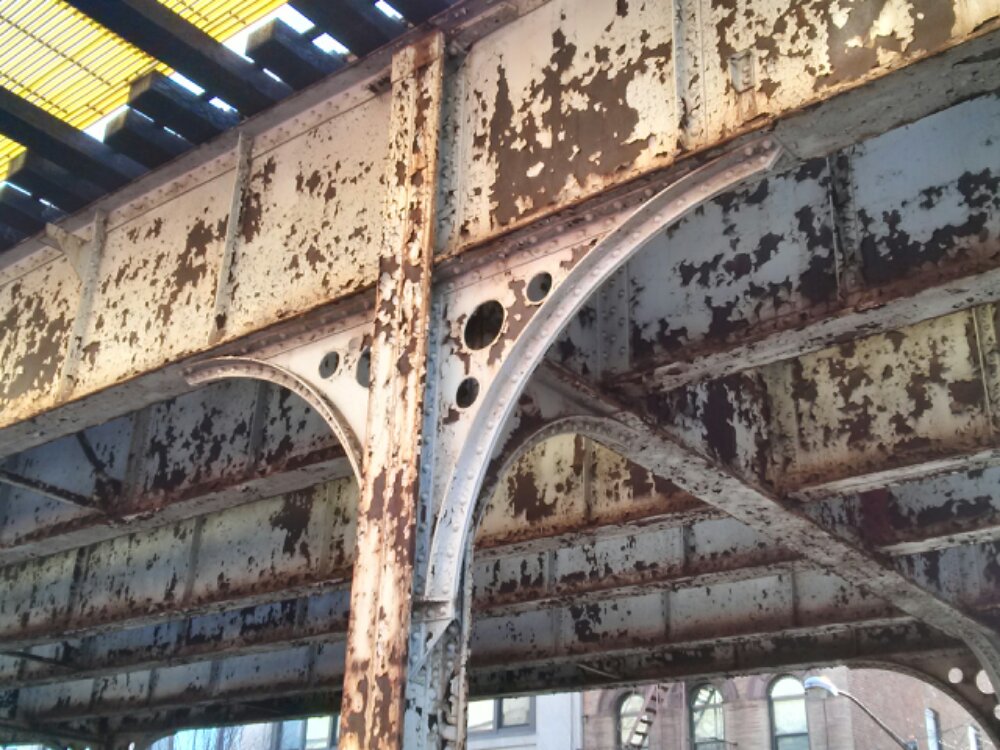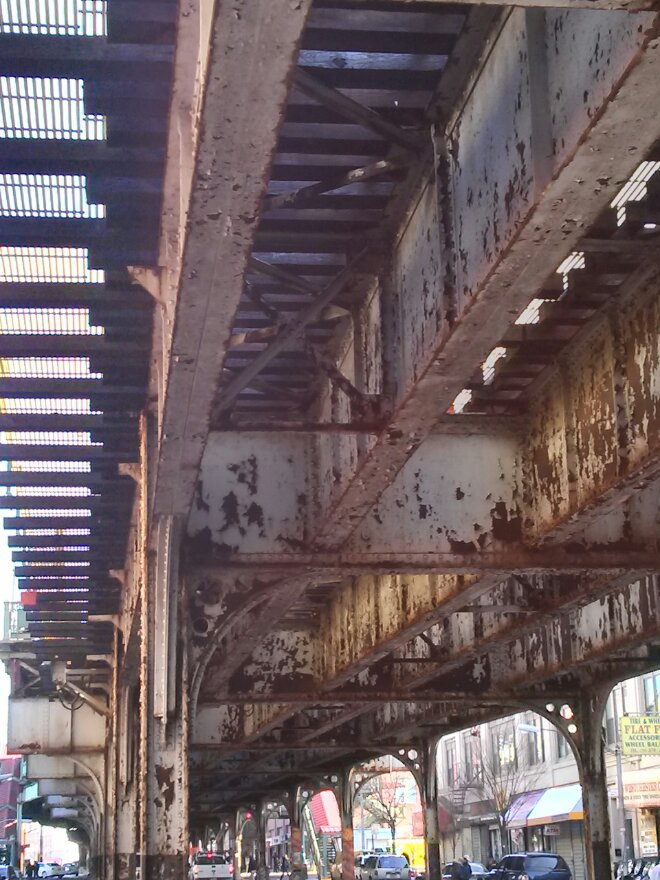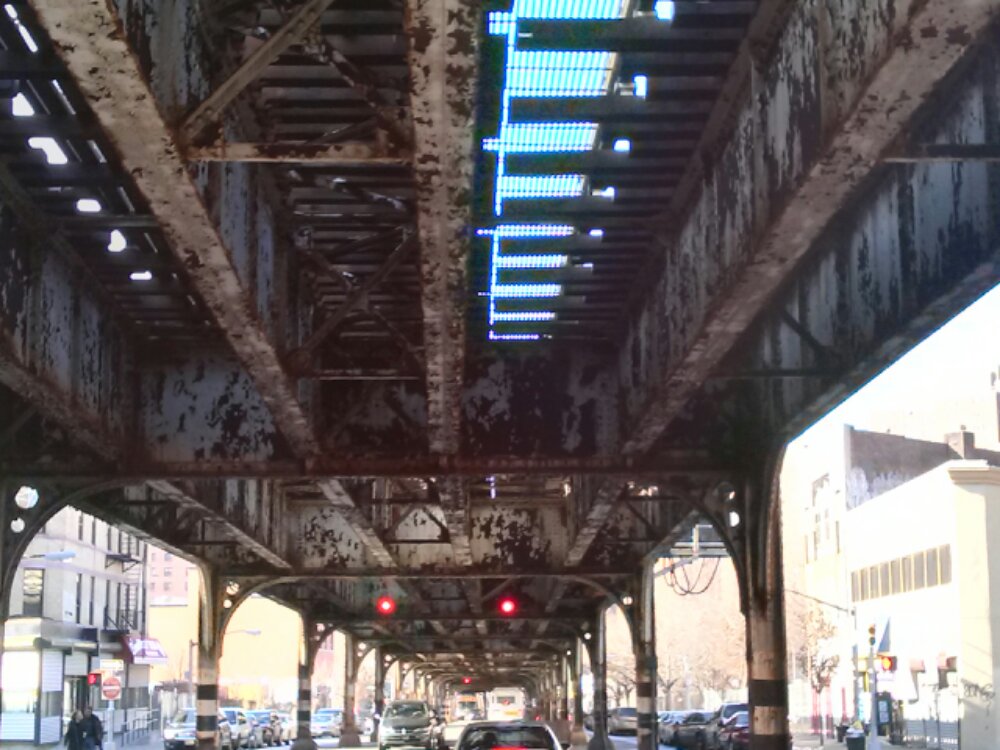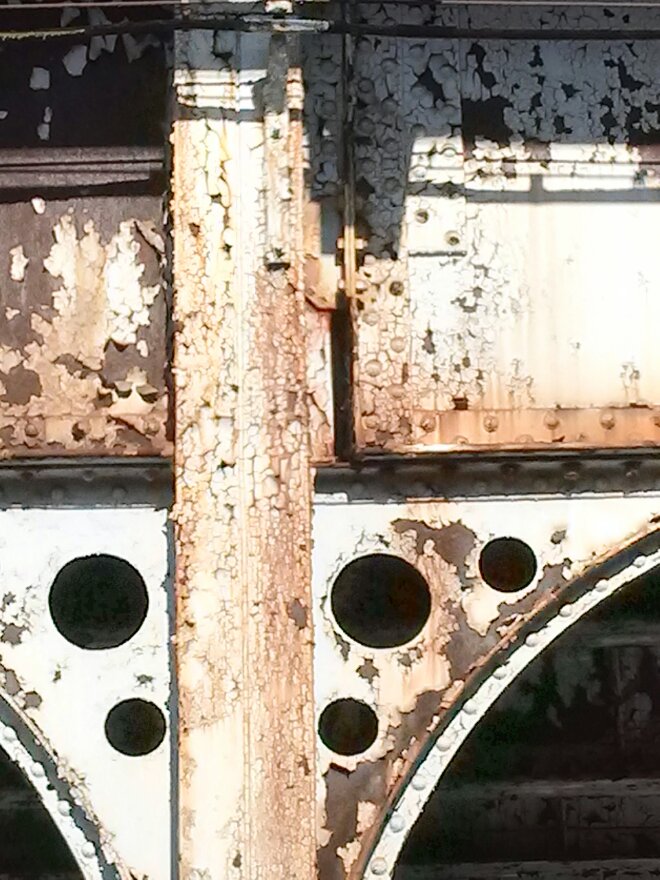This section of elevated on Westchester Avenue, near the Prospect Avenue station, dates from the original IRT built in 1905. Despite the rust and peeling paint, these pictures illustrate many of the details described in Design of Steel Elevated Railways, The New York Rapid Transit Railway Extensions, from Engineering News, 1914.
The first picture (above) shows the basic 3-track design of NYC’s elevated lines: one uptown, one downtown, and the middle one for express trains. The stringers are right under the tracks, eliminating practically all stress in the cross-ties except direct compression.
It also shows that the girders do not project beyond the stringers, making for a neater, more pleasing appearance.
A few definitions might help. Stringers are the big structural pieces running lengthwise, along the roadway. Girders are comparable, but going across. They are supported by the columns; together a girder and its supporting columns is called a “bent.” All of this structural steel supports the railroad tracks and cross-ties above.
The picture also illustrates some standard dimensions. Virtually all railroad tracks in the U.S., including subways and elevateds, are “standard gauge,” of five feet. The IRT trains are nine feet wide and the designers allowed 3.5 feet between trains for safety.
<———-9———-><-3.5-><———-9———-><-3.5-><———-9———->
This adds up to 34 feet, but the cars extend out over the tracks, by 2 feet on each side.
The schematic below illustrates how the 5-foot wide tracks sit below the 9-foot wide cars, and the 2-foot overhang on each side.
<-2-|-2.5-.-2.5-|-2-><-3.5-><-2-|-2.5-.-2.5-|-2-><-3.5-><-2-|-2.5-.-2.5-|-2->
Thus the outermost tracks, and the stringers directly underneath them are 30 feet apart.
Brackets supporting outside stringer.
These brackets are a nice feature, strengthening the structure and making it look nicer. The large holes are surely aesthetic, as the reduction in weight is minimal. Mr. Griest, in the linked article above, described that considerations of road usage (in the 1915 Dual Contract expansion) dictated a standard 26 foot distance between columns in that project. Thus, these nice, if rusty, brackets that sit directly beneath the outside stringers are only found in the original (1904-05) IRT elevated structures.
Cross braces between stringers.
Three tracks, six stringers.
Expansion joint.
These permit the steel to expand in summer and shrink in the winter. They are usually at every other bent.
